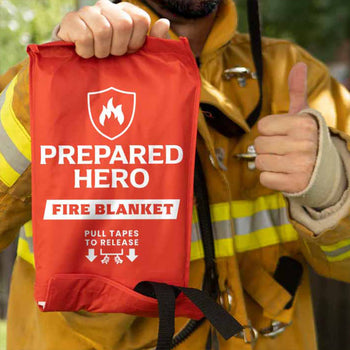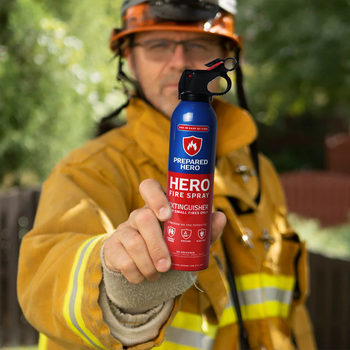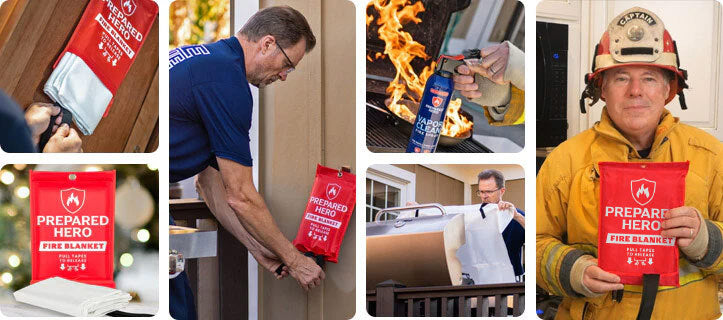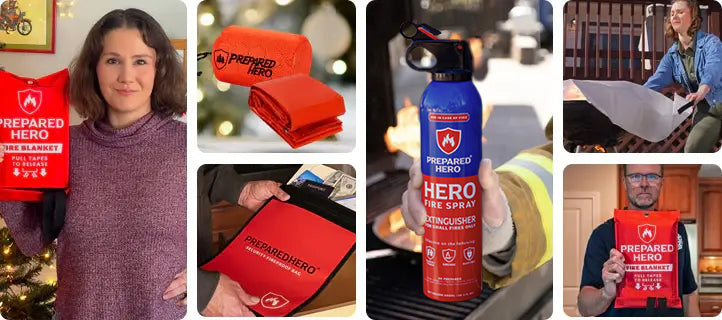Where you put your smoke detectors matters just as much as installing them. Proper placement makes sure they can detect...
Space blankets may look like simple shiny sheets, but they’re useful. First introduced by NASA (National Aeronautics and Space Administration), they reflect body heat and protect people from the elements.
Later on, people rely on them because they’re lightweight, compact, and effective. Whether you’re outdoors, in an emergency, or just staying prepared, a space blanket can make a big difference.
What Is a Space Blanket?

A space blanket, also known as a thermal blanket or emergency blanket, is a thin, lightweight, and compact sheet made of reflective material. They’re usually included in wilderness survival kits, car emergency kits, go bags, and family bug-out bags.
It’s designed to keep you warm by reflecting your body heat back to you. This reduces heat escaping through radiation, convection, and evaporation. It’s used in emergencies to help prevent hypothermia, especially outdoors or in cold conditions. It’s small enough to carry anywhere but makes a huge difference when you need it.
Why Do People Use Space Blankets?
People use space blankets because they’re an easy yet effective way to stay safe and warm during cold conditions. First introduced by NASA in 1964, these lightweight, shiny blankets are made of Mylar.
People mainly use them to hold in body heat. When you’re cold or in shock, your body loses heat quickly, and its reflective surface bounces that warmth back to you and reduces the risk of hypothermia. That’s why first responders, hikers, campers, athletes, and the like keep them handy.
However, space blankets are not just for warmth, though. They’re also used in survival situations. The material is waterproof and durable, so you can use it as a quick shelter to block wind and rain. Turn the reflective side inward, and it helps keep the heat in. Flip it outward on a hot day, and it can reflect sunlight to keep a shelter cooler.
You can also use it to signal rescuers. The shiny surface is hard to miss, especially from the air, so it can help rescuers spot you in an emergency. People also use them under sleeping bags for extra insulation or as ground covers to keep out dampness.
From keeping athletes warm after a race to giving campers a reliable backup in their packs, space blankets prove that something so small can serve many big purposes. Plus, they’re affordable, easy to carry, and versatile, so many people count on them in everyday and emergency situations.
How Does a Space Blanket Work?

A space blanket works by reflecting your own body heat back toward you. Your body naturally gives off heat through infrared radiation. Under normal conditions, the heat escapes into the air. However, the shiny surface of the blanket bounces it back. This helps you stay warmer without an external heat source.
The space blanket doesn’t actually make heat, and it isn’t the same as insulation. If you lie directly on cold ground with only a space blanket, you’ll still lose heat through conduction. That’s why it works best when you’re wrapped in it or using it along with other layers
Space blankets also block wind and moisture. Wind pulls heat off your skin, and wet clothes or sweat cool you down fast. Since Mylar is windproof and waterproof, it helps stop both.
Space blankets are commonly used in emergency kits, marathons, and search-and-rescue situations. Hospitals and vets use them as well, since patients and animals under anesthesia can lose body heat quickly. In short, they’re a simple but powerful tool for staying warm in tough conditions.
How Long Do Space Blankets Last?
Space blankets can last for a long time if you take care of them. They’re made of Mylar, which is strong for its weight but can tear or puncture if you’re not careful. Plus, the shiny coating that reflects heat can also wear down if you use it roughly (e.g., using it as ground cover).
You can get many uses from a single space blanket with normal use, like wrapping it around yourself for warmth. Many brands, like the Prepared Hero Survival Bag, can last many seasons.
Storage also plays a big role. Keeping the blanket folded in a cool, dry place and away from sharp objects will extend its life. While space blankets are reusable, they’re not indestructible.
What Is a Space Blanket Called?

A space blanket is also called a foil blanket, thermal blanket, Mylar blanket, or emergency blanket. No matter what you call it, this sheet made from metallic-coated plastic reflects heat. This reflective material helps your body reflect heat, which is why it’s so useful in emergencies, outdoor adventures, or medical situations. Hikers, runners, and first responders usually carry them because they’re lightweight, compact, and can make a big difference when temperatures drop.
What Is the R-value of a Space Blanket?
The R-value of a space blanket is basically negligible, which means it doesn’t act like traditional insulation. The R-value measures how well something resists heat transfer through conduction. Since a space blanket is thin, it doesn’t have the bulk needed to slow heat moving through solid contact. That’s why you can’t rely on it the same way you would a sleeping bag or foam pad.
While it has a negligible R-value, a space blanket can reflect up to 90% of your body’s heat back toward you. This makes it great for keeping warm in emergencies. Instead of holding heat in like thick insulation, it works more like a mirror for body heat.
It also serves as a vapor barrier that stops moisture from escaping and reduces heat loss caused by sweat evaporation. However, it doesn’t do much against heat loss from air movement (convection) or direct contact with cold ground or surfaces. In short, its R-value is low, but its ability to reflect heat is what makes it effective.
What Is the Purpose of a Foil Blanket?

A foil blanket, also known as a space blanket, has one main purpose: to help your body hold onto heat when conditions turn cold. The shiny, metallic surface reflects up to 90% of your body’s radiant heat back toward you, which can make a big difference in keeping your core temperature stable. That’s why these blankets are listed as an essential item in first aid kits under British Standard Regulations (BS-8599).
Aside from reflecting heat, foil blankets are also windproof and waterproof. This means they can protect you from heat loss caused by cold air moving around you (convection) but also from losing warmth when in contact with cold, wet surfaces (conduction). Together, these features make them a simple but powerful tool for reducing the risk of hypothermia in emergencies.
Their purpose doesn’t end with warmth. Because they’re lightweight and compact, foil blankets can be used in other smart ways. People use them to signal for help, line shelters for extra insulation, or even collect water in survival situations. Athletes often wrap themselves in them after long races to stop sudden temperature drops.
In short, the main purpose of a foil blanket is heat retention, but its versatility makes it useful in all kinds of emergency or outdoor scenarios.
What Is the Difference Between a Survival Blanket and a Space Blanket?
The terms survival blanket and space blanket get used a lot, and most of the time, they’re the same thing. Both are reflective sheets made to trap body heat and help prevent heat loss. The main difference lies in how the names are used.
The name space blanket comes from its NASA roots. In 1964, NASA developed this reflective material for space exploration, which is how the name stuck. A space blanket is usually made of Mylar, a thin polyester film coated with aluminum. It reflects radiant body heat back to you, so you stay warm. While it’s effective, it doesn’t insulate against cold ground or strong wind unless combined with other gear.
On the other hand, a survival blanket is more of a general term. It often refers to the exact same material and design, but it’s used more in outdoor, camping, or emergency preparedness contexts. Survival blankets are sold as part of first aid kits, hiking gear, and survival packs. They’re lightweight, compact, and can also double as ground covers, makeshift shelters, or even signal devices because of their shiny surface.
So, while there isn’t a real material or functional difference, the context matters. The term space blanket points to its NASA origin, while the term survival blanket highlights its everyday use for emergencies and outdoor situations.
How Many Times Can You Use a Space Blanket?

You can use a space blanket several times. How long they last depends on how you treat them. If you’re just using one for extra warmth while camping or during a training exercise, it can hold up for several outings without a problem.
That said, they’re not built for heavy use. The thin Mylar material can tear or crease easily. It also gets weaker each time you fold or unfold it. Storing it properly and avoiding rough use can help extend its life, but eventually, it will wear out and stop reflecting heat.
In short, think of a space blanket as something you can reuse, but don’t count on it lasting forever. For emergencies, always keep a fresh one handy, just in case.
What Are the Disadvantages of Mylar Space Blankets?
Mylar space blankets are handy, but they do have downsides. They tear easily and don’t insulate you. They only reflect heat instead of producing it. They can also trap moisture, which makes you feel damp.
What Did NASA Use Space Blankets For?

NASA used space blankets to deal with extreme temperature swings in space. Without protection, parts of a spacecraft could drop to -360°F. To fix this, NASA used thin, reflective Mylar blankets to keep spacecraft systems stable and protect astronauts. These blankets worked by reflecting body heat, blocking infrared radiation, and helping control how much heat was lost or gained.
Space blankets also protected equipment from the harsh space environment, keeping things at safe, room-like temperatures. Over time, the same technology made its way to everyday use on Earth. Now, those same shiny blankets that kept astronauts safe are used in emergencies, outdoor survival, and even at marathons to stop sudden heat loss.
Can You Wash a Space Blanket?
No, you can’t wash a space blanket. They’re not meant for machine washing since the material is delicate and can tear. If they get dirty, gently wipe them with a damp cloth or mild soap. That way, they don’t lose their effectiveness.
How Much Does a Space Blanket Weigh?
A space blanket usually weighs between 1.8 and 2.9 ounces, or 51 to 82 grams. They’re light and compact, making them easy to carry in a pocket or bag.
Which Side of a Space Blanket Goes Up?

Which side of a space blanket you use depends on the situation. If you’re cold or at risk of hypothermia, the shiny silver side should face you. That way, it reflects your body heat back and helps you stay warm.
If you’re overheating, like in extremely hot weather, you flip it around. With the shiny side facing outward, it bounces the sun’s rays away and helps keep you cooler.
Many blankets also come with a silver or brightly colored side. That side is useful for signaling since it makes you more visible to rescuers from a distance. Space blankets vary, so it’s smart to check the instructions on the one you’re carrying.
Conclusion
Space blankets are simple but smart tools worth keeping around. They don’t weigh much, barely take up space, and can be a lifesaver in emergencies. While they have limits, their ability to reflect heat and block wind or rain makes them incredibly useful. Whether you’re hiking, camping, running a race, or just preparing for the unexpected, having one handy is a smart choice. Stay prepared, hero!


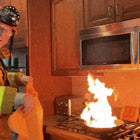 Fire
Fire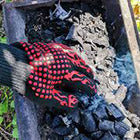 Safety
Safety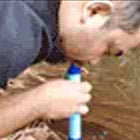 Survival
Survival Protection
Protection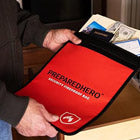 New
New
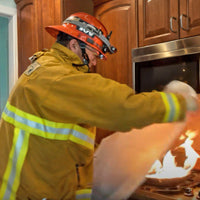 Fire
Fire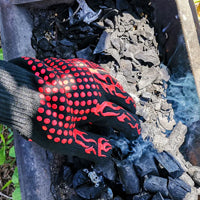 Safety
Safety Survival
Survival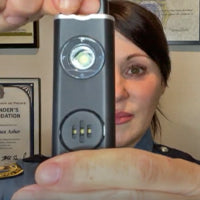 Protection
Protection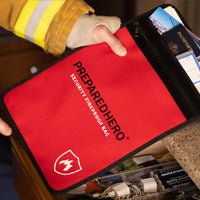 New
New
